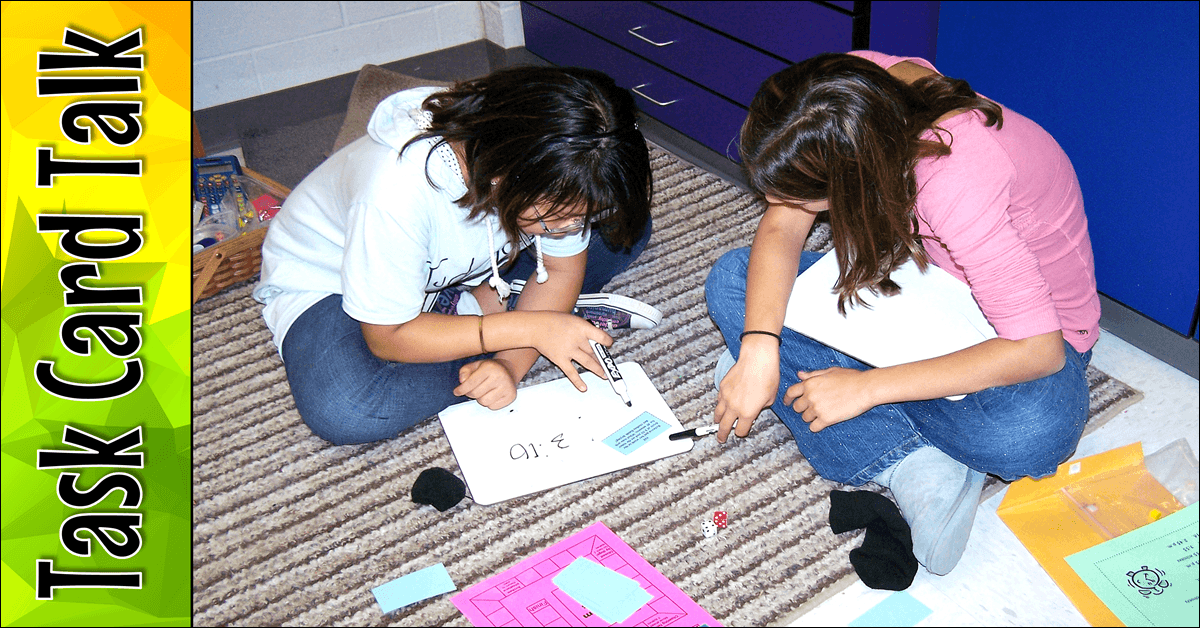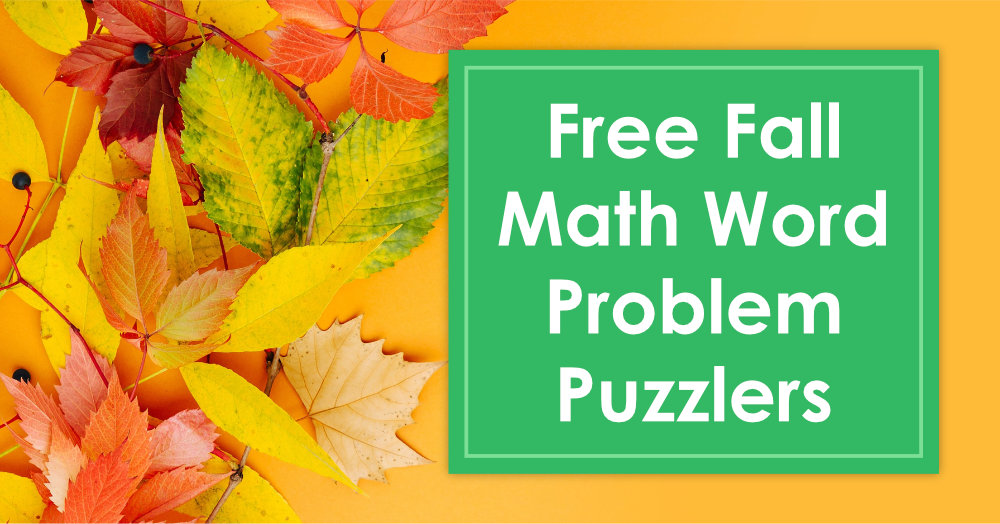Part One – Crafting the Problem
Growth mindset is much more than a buzzword, and nowhere is this more apparent than in mathematics. Research findings in this field are transforming our perceptions about best practices in math instruction. As it turns out, developing a mathematical mindset is more highly correlated with future success in math than scores on standardized tests!
One way to begin fostering a math mindset in your students is to turn traditional word problems into “rich math tasks.”
I tackled the topic of rich math tasks in my recent webinar, Math Problem Solving: Mindsets Matter, but I want to dig into rich math tasks a bit more here on Corkboard Connections.
Rich math tasks have two critical components, the WHAT (the problem) and the HOW (the process).
In this post, we’ll take a look at how to transform a boring word problem into a rich math task. In my next post, I’ll share active engagement strategies you can use to help your kids rock the problem solving process! Click here for Part Two.
How a Word Problem Differs from a Rich Math Task
Basic Word Problems
Word problems at the elementary level tend to be simple problems with a single correct answer. Children are often taught to solve them by learning to identify key words and numbers in the problem and then applying the necessary mathematical operation. For example, a basic word problem might read like this: “There are 10 apples, and it takes 2 minutes to peel each apple. How many minutes in all are needed to peel the apples?”
A typical method of solving this problem involves underlining the key words “each” and “in all” and circling the numbers 10 and 2. The key words tell students that they need to multiply the numbers to find the answer, so they multiply 10 and 2 and record the number 20 as the answer. If you ask these students to draw or model the solutions visually, they are at a loss. If you ask them to label the answer with the unit, they are as likely to write “20 apples” as they are to write “20 minutes.”
Word problems don’t inspire deep thinking, analysis, or discussion because the solutions are fairly straight forward. Sure, you can encourage your students to talk with a partner about how they solved the problem, but their explanations will sound like this: “First I underlined the key words, and then I circled all the numbers. Next, I multiplied the numbers to get my answer.” An explanation like that hardly qualifies as “math talk”!
Rich Math Tasks
Rich math tasks, on the other hand, are usually more open-ended and can be solved in many ways. Some math tasks are inquiry-based questions that have more than one correct answer or problems that require students to use hands-on materials to discover the solutions. Other math tasks look like regular word problems at first glance, but when you attempt to solve them, you realize there are many ways to arrive at the answer. Rich math tasks don’t have key words that you can underline, and circling the numbers won’t help because you might not even need all the numbers to solve the problem! These types of math tasks stimulate discussion, questioning, and critical thinking as students struggle to choose the best strategy to solve the problem.
6 Tips for Crafting an Awesome Math Task
Finding or creating the right math problem is the first step in developing a rich math task. Here are some tips that will make the process of crafting your problem much easier.
1. Start with a Visual Problem
Select a word problem that’s easy to visualize, and try to solve it in several different ways. Make sure the answer can be represented visually by drawing it or by using physical models. If you realize that there’s only one way to solve it or that it would be difficult to represent the solutions visually, rewrite the problem or find a new one. I’ll use the Apple Peeling Word Problem above to demonstrate how to turn a simple word problem into something much more challenging and interesting.
2. Remove Key Words
After you’ve selected a problem, look for key words such as, “in all,” “each,” “per,” and “total.” If possible, rewrite the problem without using the key words, making sure that the meaning doesn’t change. Removing key words forces students to THINK about which operation is needed instead of just underlining words and mindlessly choosing an operation based on those words.
3. Add Extra Details and Information
Next, add details that aren’t really needed to find the solution. If students have been trained to underline key words and circle numbers, these extra details will confuse them. They will have to think about the task and decide which words and numbers are actually important.
Let’s use the first 3 tips to rework the Apple Peeling Word Problem and turn it into Apple Peeling Challenge #1. While the problem is still quite easy, the lack of key words and the extra numbers make it a bit more challenging. Students have to think about what is being asked and decide the best way to solve it. This is a good starter problem for introducing students to rich math tasks because it can be solved in more than one way using visual models. Students could draw circles for the apples, use round objects like pennies or bingo chips, or they could even use real apples!
Ready to take Apple Peeling Challenge #1 to another level? Applying the next 3 tips to that problem will make it even more challenging and interesting!
4. Personalize It and Make It Real
To make the problem more interesting, personalize it by adding a real person’s name, maybe even the name of one of your students! Add enough details to make it come to life or turn it into a story. In Apple Peeling Challenge #2, including the detail that Sam is peeling the apples for a pie makes the problem more meaningful. A teacher in the Math Mindset Connections Facebook group took this problem and turned it into a story about making a pie for Thanksgiving dinner!
5. Turn It into a Multi-step Problem
Rewrite single-step word problems to ensure that multiple steps are needed to solve it. The information in the basic word problem stated that it takes 2 minutes to peel each apple. The easiest way to add another step is to replace that detail with enough information for students to calculate how long it takes to peel each apple. Each problem will be a bit different, but there’s always a way to modify the problem and turn it into a multi-step math task.
6. Change the Numbers
You can often make a word problem more challenging by changing the number values. For example, instead of Sam peeling 10 apples, he might need to peel 100 apples because he’s baking 10 pies for a banquet. You can also use numbers that result in fractional answers. For example, in Apple Peeling Challenge #2 above, Sam can peel 4 apples in 6 minutes so kids should be able to figure out how long it takes to peel one apple. But 6 is not divisible by 4, so the number of minutes it takes to peel one apple is not a whole number. Do you see how tweaking the numbers a little can instantly make the problem much more challenging? Now you have a problem that’s perfect for a math task!
Why not try creating your own Apple Peeling Challenge? In the Math Problem Solving: Mindsets Matter Webinar, I shared 2 more apple peeling problems that are quite different from the problems in this post. I’ll bet you can come up with your own apple peeling problems, too!
Where to Find Editable Word Problems for Rich Math Tasks
If you don’t want to craft your own multi-step word problems, or you don’t have time to hunt for them, check out my newest product, Math Mindset Challenges. It’s a growing collection of editable word problems in several different formats. The problems themselves are in an editable PowerPoint document so you can change the wording and customize them if needed. All of the problems have been field-tested by upper elementary teachers, and they work well as is, but if you use a different measurement system or want to tweak the problems using the tips above, you can easily do that. If you’d like to take a closer look, head over to my TpT store and click on the preview link on the product page.
The Math Mindset Challenges product shown above is included in my Math Mindset Challenges Webinar Bundle and my Math Problem Solving Bundle. Both bundles include the Math Problem Solving: Mindsets Matter professional development webinar, too.
Next Up – Part Two: Crafting the Process
Remember that rich math tasks have two essential components, the WHAT and the HOW. In this post, I’ve tackled the WHAT, the math problem itself. However, it’s not enough to create a great word problem; it’s what you do with that problem that counts! Click here to read Part Two, Crafting the Process, where I dove into HOW to facilitate the problem solving experience. I shared loads of active engagement strategies that will take problem solving to a whole new level in your math classroom!











